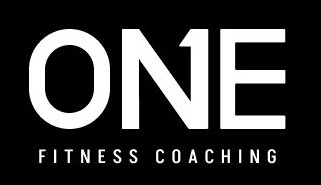The Power Of Change
Title: The Power of Change: How Altering Your Workout Routine Every 4 Weeks Can Supercharge Your Progress
Introduction:
If you've been hitting the gym regularly but have noticed a plateau in your fitness progress, it may be time to shake things up. One highly effective strategy to keep your body guessing and continually progressing is to change your workout routine every four weeks. By introducing new exercises, varying intensity levels, and modifying training techniques, you can shock your body into responding with increased strength, endurance, and muscle gains. In this blog post, we'll explore the benefits of changing your workout stimulus regularly and provide tips on how to incorporate this practice into your fitness routine.
1. Breaking Through Plateaus:
Our bodies are remarkably adaptive, and they quickly adapt to repetitive physical stimuli. When you perform the same exercises week after week, your muscles become efficient at executing those movements, leading to diminished gains over time. However, by introducing new exercises and training methods, you disrupt this adaptation process, forcing your body to constantly readjust and improve. This break in routine can help break through plateaus and kick-start new gains.
2. Muscle Confusion and Adaptation:
The principle of "muscle confusion" is at the core of changing your workout routine every four weeks. By altering the stimulus, you challenge different muscle groups, activate new muscle fibers, and engage stabilizer muscles. This not only helps prevent muscle imbalances but also promotes overall strength and functional fitness. By exposing your body to a variety of exercises, you create a more balanced and adaptable physique.
3. Increased Motivation:
Sticking to the same workout routine for an extended period can become monotonous and lead to diminished motivation. By changing your routine every four weeks, you introduce excitement and anticipation into your training. The prospect of trying new exercises and pushing your limits can reignite your passion for fitness, making your workouts more enjoyable and sustainable in the long run.
4. Preventing Overuse Injuries:
Repetitive movements and strain on specific muscle groups can lead to overuse injuries over time. By diversifying your workout routine, you reduce the risk of these injuries by redistributing the workload across different muscle groups. Additionally, changing exercises allows you to target weak areas, strengthen imbalances, and improve overall muscle symmetry, leading to a more robust and injury-resistant body.
5. How to Incorporate Change:
To effectively incorporate change into your workout routine, follow these guidelines:
a. Set a Four-Week Timeline: Commit to changing your routine every four weeks to allow your body ample time to adapt to the new stimulus while preventing stagnation.
b. Vary Exercise Selection: Include a mix of compound exercises, isolation exercises, and functional movements. Experiment with different equipment, such as free weights, resistance bands, or bodyweight exercises, to challenge your muscles from different angles.
c. Adjust Intensity Levels: Incorporate high-intensity intervals, drop sets, or supersets to intensify your workouts. By manipulating the intensity, you further challenge your body and promote cardiovascular health.
d. Monitor and Track Progress: Keep a detailed record of your workouts, noting the exercises, weights used, and sets and reps performed. This will help you assess your progress accurately and determine which exercises and techniques yield the best results.
Conclusion:
Changing your workout routine every four weeks is a powerful strategy to shock your body into continual progress. By introducing new exercises, varying intensity levels, and modifying training techniques, you can prevent plateaus, increase motivation, and promote overall fitness gains. Remember to listen to your body, gradually introduce changes, and keep track of your progress to make informed adjustments. Embrace the power of change, and watch as your fitness journey reaches new heights!
